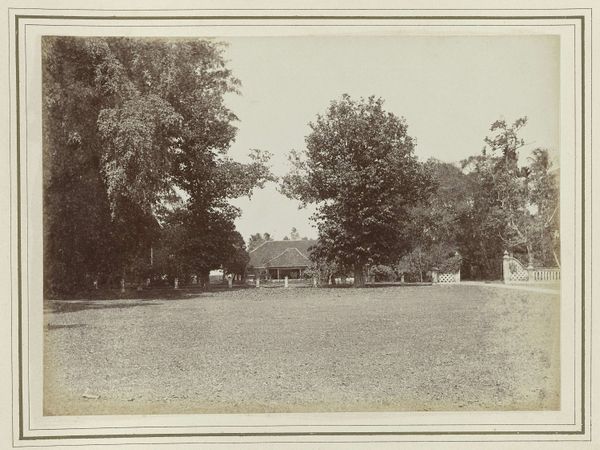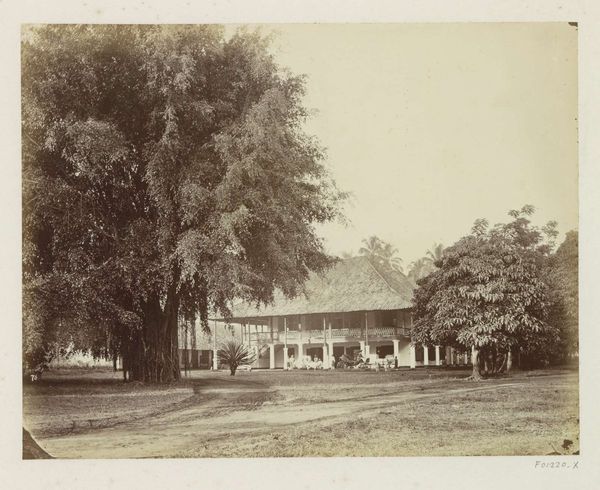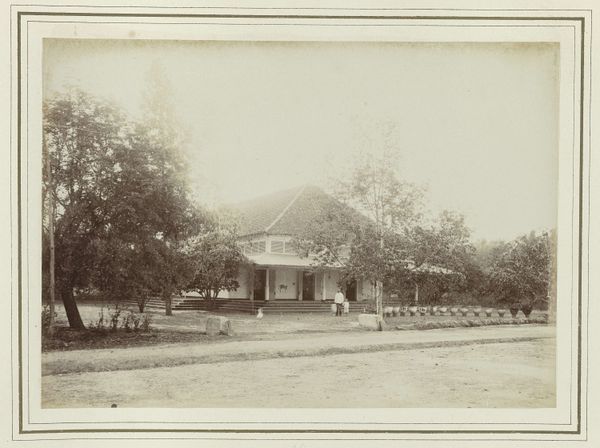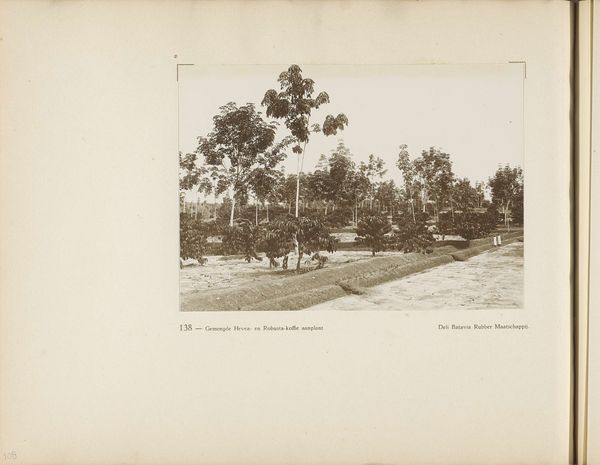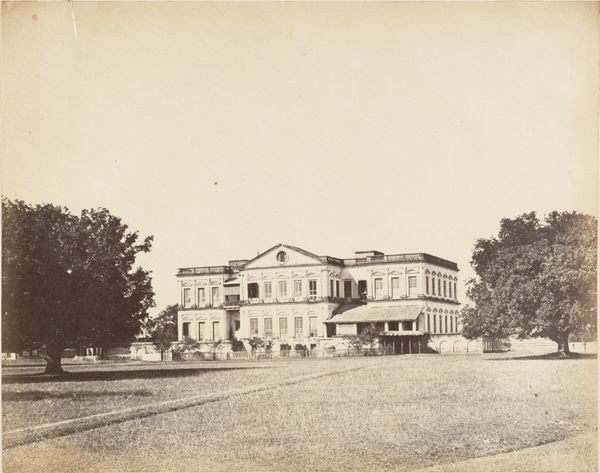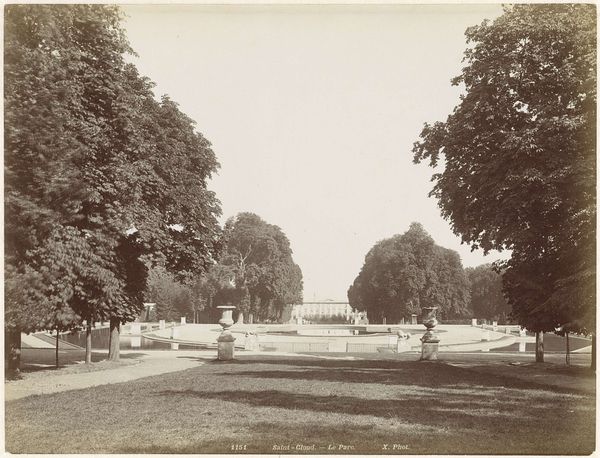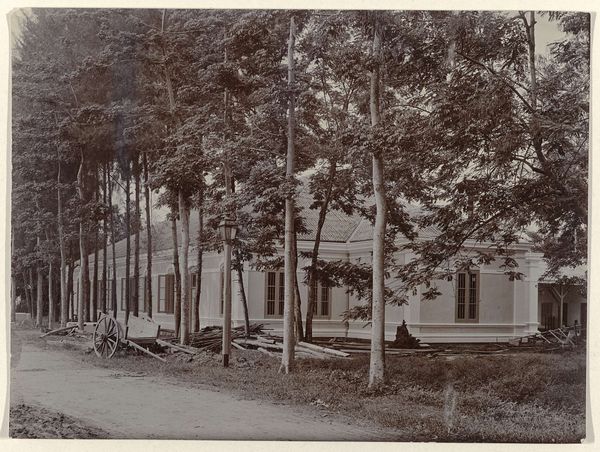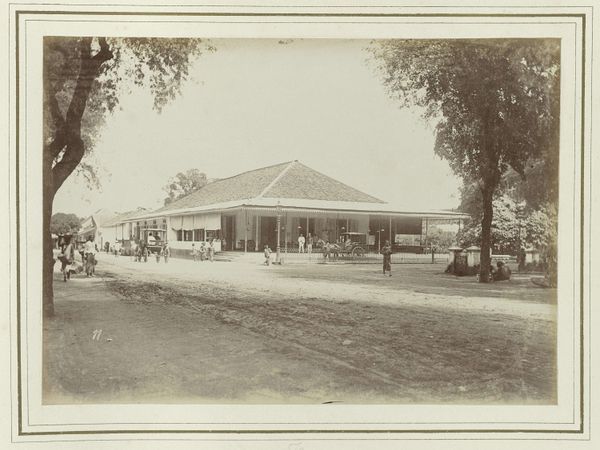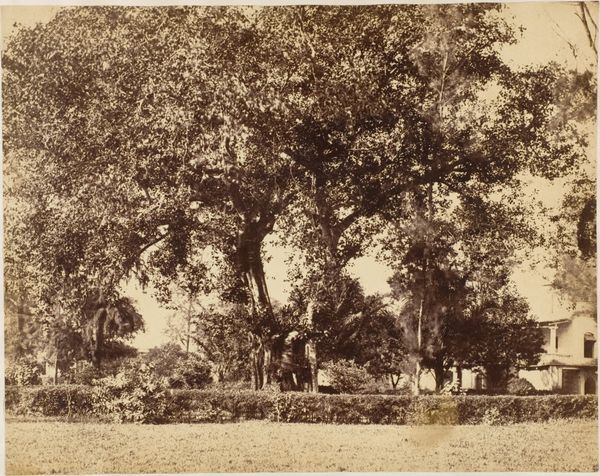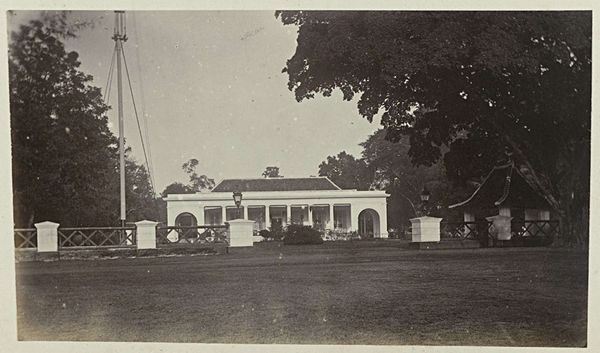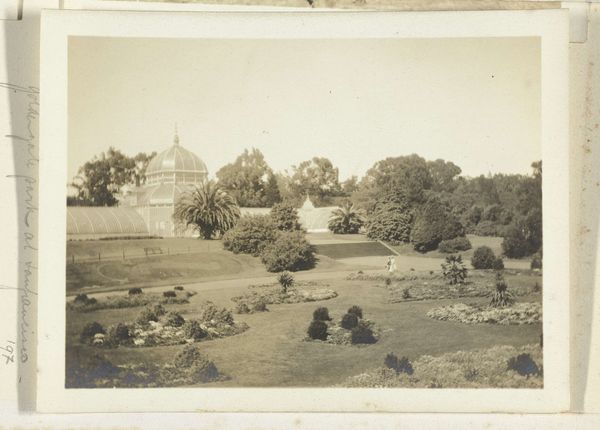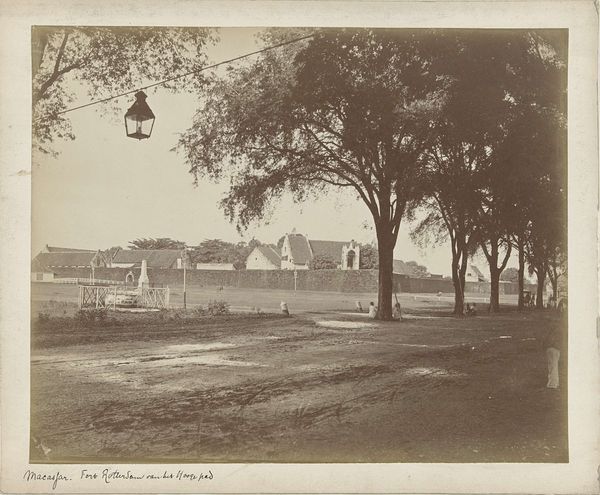
Raadhuis en Michielsmonument aan het Michielsplein in Padang 1891 - 1912
0:00
0:00
christiaanbenjaminnieuwenhuis
Rijksmuseum
print, photography, site-specific
#
statue
#
dutch-golden-age
# print
#
landscape
#
photography
#
site-specific
Dimensions: height 207 mm, width 274 mm
Copyright: Rijks Museum: Open Domain
Curator: Ah, this image exudes a serene formality... a captured moment suspended in time. Editor: Indeed. We’re looking at an old photograph titled "Raadhuis en Michielsmonument aan het Michielsplein in Padang", attributed to Christiaan Benjamin Nieuwenhuis. It was taken sometime between 1891 and 1912. It's currently held in the Rijksmuseum. Curator: It feels strangely melancholy. That vast field... it's almost oppressive in its stillness. The stark white building in the distance only emphasizes the isolation. Editor: Precisely. Nieuwenhuis utilizes a masterful interplay of light and shadow, dividing the composition into distinct zones. The darker foreground draws us in, gradually leading the eye towards the illuminated town hall. The monument is like a dark echo, its verticality puncturing the flat horizon. Curator: That monument... what do you suppose it signifies? It looms there like a silent sentinel, guarding the secrets of this place. Maybe it’s for a battle lost, or some unspoken sorrow. Or maybe it’s just my overactive imagination running wild again. Editor: Well, within the visual language of nineteenth-century colonial photography, monuments often served as explicit markers of power and cultural presence. Consider also the town hall as the seat of local government in Padang, representing another stratum of authority. Curator: It’s all a bit ghostly, really. The monochromatic tones contribute to that, I think. The photo doesn't quite capture the soul. The light doesn’t breathe into life the same way as if I were to see that monument now. Almost like seeing a beautiful bird pinned in glass. Editor: A compelling point. I perceive instead how the photograph functions as an artifact in its own right, mediating a past reality for present viewing. The technical limitations contribute an aesthetic unique from the staged artificiality of, say, painting or staged photography of the era. Curator: I'll tell you one thing, I wish the person in this photo would turn around, walk towards us, and let us in on whatever little world that exists over there. To speak of what existed for them that doesn't exist for us today, I guess. Editor: Well, in this static dialogue between form and content, your reading allows a glimpse beyond objective representation and invites an imaginative connection, if not a direct exchange. Thanks for joining me!
Comments
No comments
Be the first to comment and join the conversation on the ultimate creative platform.
